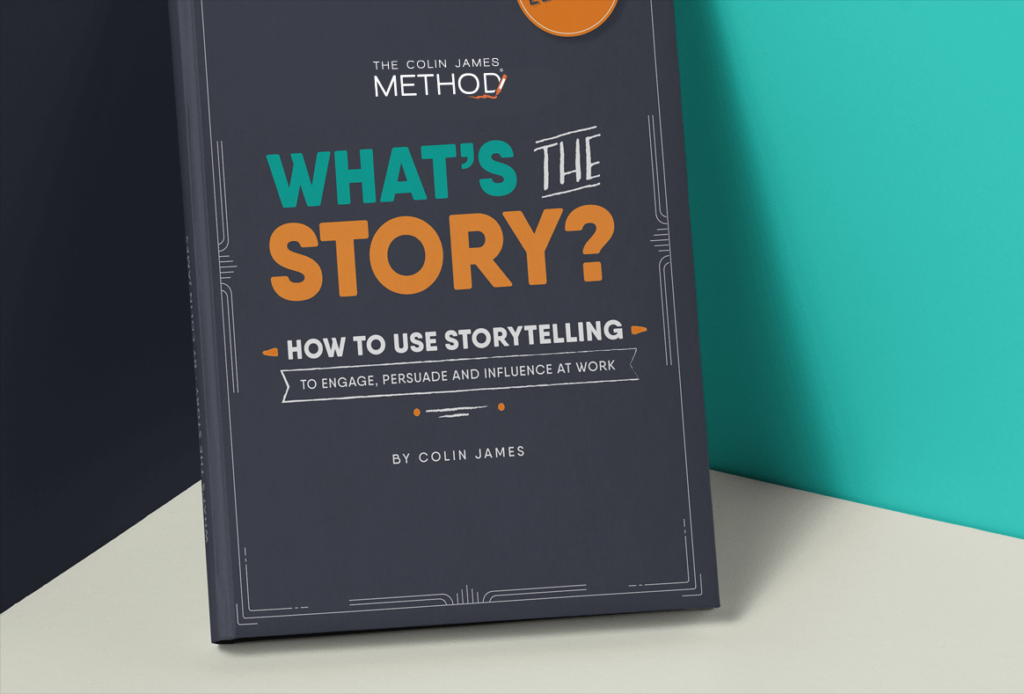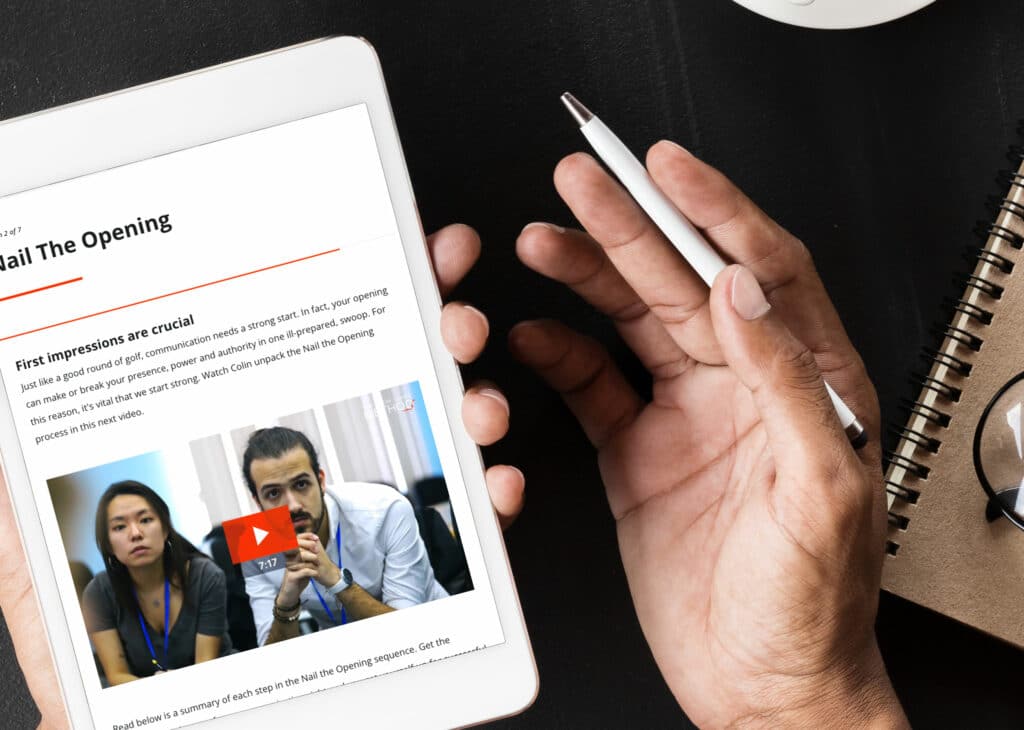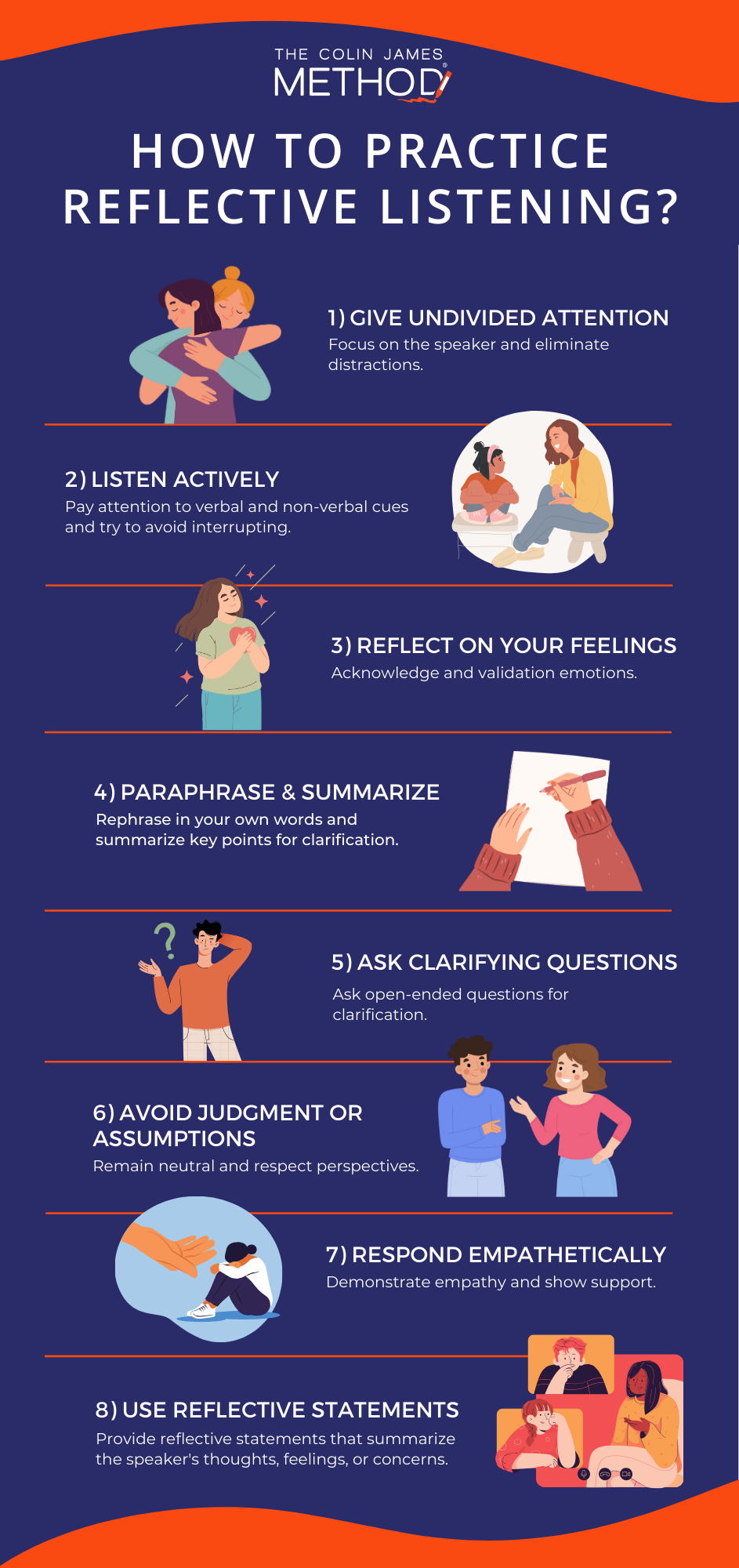Summary
- Reflective Listening is a communication technique used to actively demonstrate listening, understanding, and processing information. It involves repeating back what the other person has said, asking questions for clarity, and summarizing the conversation.
- Reflective Listening aims to improve communication and understanding by validating the other person’s feelings and contributing to a calmer, more positive atmosphere.
- It offers individuals a chance to explain themselves and ensures they feel heard, making it a vital skill used by professionals like counselors, coaches, and mentors.
Definition of Reflective Listening
Definition: Reflective Listening is a communication technique used to actively show that a person is listening, understanding and processing information. It involves repeating back what the other person has said, asking questions to gain clarity, and summarizing the conversation.
Reflective Listening gives the other person a chance to explain what they mean and ensure that they are being heard. It is an important skill used by professionals such as counselors, coaches, and mentors to help develop a better understanding of the speaker’s feelings and thoughts.
Examples of Reflective Listening may include repeating the speaker’s words, paraphrasing what has been said, summarizing the conversation, or asking open-ended questions like “how does that make you feel?”. The goal of Reflective Listening is to improve communication and understanding by validating the other person’s feelings and helping to create a calmer, more positive atmosphere.
What are the Benefits
Reflective listening is a valuable communication skill that can significantly benefit individuals in various aspects of their lives, including the workplace, day-to-day interactions, and relationships. Its practice involves actively listening to and understanding the speaker’s words and emotions, then paraphrasing or reflecting back what was said to ensure comprehension and demonstrate empathy. The benefits of employing reflective listening in these different spheres are many:
-
- Enhanced Communication and Collaboration in the Workplace:
-
-
- Improved Understanding: Through reflective listening, you gain a deeper understanding of colleagues’ perspectives, concerns, and ideas. This understanding fosters better teamwork, collaboration and communication in the workplace.
-
-
-
- Conflict Resolution: Active listening and reflection can diffuse tense situations by validating others’ feelings and facilitating clearer communication, leading to more effective conflict resolution.
-
-
-
- Building Trust: By demonstrating empathy and understanding, reflective listening fosters trust among coworkers, enhancing the overall work environment.
-
-
- Improved Interpersonal Skills in Day-to-Day Life:
-
-
- Strengthened Relationships: Reflective listening builds stronger connections with friends, family, and acquaintances by showing genuine interest and concern for their thoughts and emotions.
-
-
-
- Reduced Misunderstandings: By actively engaging in listening and reflection, the chances of misunderstandings decrease, leading to smoother interactions in daily life.
-
-
- Healthy and Fulfilling Relationships:
-
-
- Deeper Emotional Connection: In personal relationships, reflective listening nurtures a deeper emotional connection by conveying empathy and validating the feelings of your partner or loved ones.
-
-
-
- Conflict Management: It aids in resolving conflicts constructively by allowing both parties to express themselves and feel understood, leading to more harmonious relationships.
-
Core Theories of Reflective Listening
Reflective listening draws upon several fundamental theories and concepts from the field of communication and psychology to facilitate effective communication and understanding. Some of the key theories that underpin reflective listening include:
- Carl Rogers’ Person-Centered Therapy:
- Carl Rogers, a prominent psychologist, introduced the concept of empathic understanding as a cornerstone of effective therapy. Person-centered therapy emphasizes the therapist’s ability to deeply understand and reflect the client’s feelings and thoughts without judgment. This theory forms the basis of reflective listening, emphasizing empathy, unconditional positive regard, and genuineness in communication.
- Carl Rogers and Richard Farson Active Listening Theory:
- Active listening involves fully concentrating, understanding, responding, and remembering what is being communicated. Reflective listening utilizes active listening techniques, encouraging the listener to be fully present and engaged, seeking to comprehend the speaker’s message accurately.
- Daniel Goleman’s Model of Emotional Intelligence:
- Reflective listening relies on empathic understanding, which involves the ability to perceive and understand the emotions, thoughts, and perspectives of others. Emotional intelligence theories, particularly Daniel Goleman’s model, emphasize the importance of empathy in effective communication. Reflective listening cultivates emotional intelligence by acknowledging and validating emotions expressed by the speaker.
- Albert Bandura’s Social Learning Theory:
- Albert Bandura’s social learning theory suggests that people learn from observing and modeling the behaviors, attitudes, and emotional reactions of others. Reflective listening encourages individuals to model active listening behaviors, promoting more effective communication and understanding in interpersonal interactions.
- Transactional Analysis by Eric Berne:
- Transactional Analysis, developed by Eric Berne, explores communication and personality patterns. Reflective listening aligns with the concept of ‘ego states,’ emphasizing the importance of recognizing and responding appropriately to the emotional state or ‘ego’ of the speaker, facilitating a more productive conversation.
These theories collectively contribute to the foundational principles of reflective listening, emphasizing the importance of empathy, active engagement, non-judgmental understanding, and effective communication in fostering deeper connections and resolving conflicts in various contexts, including therapeutic settings, personal relationships, and professional environments.
How to Practice Reflective Listening
01. Give Undivided Attention
- Focus on the Speaker: Eliminate distractions and give your full attention to the speaker. Face them directly, maintain eye contact, and use open body language (e.g., uncrossed arms) to signal your attentiveness.
- Eliminate Distractions: Turn off or silence electronic devices and minimize interruptions to ensure the speaker feels heard and valued.
02. Listen Actively
- Pay Attention to Verbal and Non-verbal Cues: Listen not only to the words being spoken but also to the speaker’s tone of voice, facial expressions, and body language. These cues convey emotions and additional meaning beyond the words.
- Avoid Interrupting: Refrain from interrupting the speaker, allowing them to express themselves fully before responding.
03. Reflect on Your Feelings
- Acknowledge Emotions: Recognize and acknowledge the emotions expressed by the speaker. Use phrases like, “It sounds like you’re feeling…” or “I sense that you’re…”
- Validate Emotions: Show understanding and validation of the speaker’s feelings without judgment.
04. Paraphrase and Summarize
- Rephrase in Your Own Words: Reflect back what the speaker said in your own words to confirm understanding. For example, “If I understand correctly, you’re saying…”
- Summarize Key Points: Highlight the main points or concerns shared by the speaker to ensure you’ve grasped the essence of their message.
05. Ask Clarifying Questions
- Seek Clarification: If there’s ambiguity or if you’re unsure about something, ask open-ended questions for clarification. Avoid leading or closed-ended questions that could limit the speaker’s response.
06. Avoid Judgment or Assumptions
- Remain Neutral: Refrain from making assumptions, passing judgment, or expressing personal biases during the conversation. Maintain a non-judgmental and objective stance.
- Respect Perspectives: Even if you disagree with the speaker’s viewpoints, show respect for their perspective.
07. Respond Empathetically
- Demonstrate Empathy: Respond with empathy and understanding. Use phrases like, “I can understand why you’d feel that way” or “That sounds challenging.”
- Show Support: Offer support and encouragement when appropriate to convey that you’re there to listen and assist.
08. Use Reflective Statements
- Offer Reflections: Provide reflective statements that summarize or mirror the speaker’s thoughts, feelings, or concerns. For instance, “It seems like you’re worried about…” or “You’re feeling frustrated because…”
Applying Reflective Listening in Different Scenarios
- At Work
- Use reflective listening during meetings, negotiations, or discussions to foster better understanding, collaboration, and conflict resolution.
- Apply it during performance reviews to show empathy and understanding while addressing concerns or feedback.
- In Personal Relationships
- Employ reflective listening with friends, family, or partners to deepen emotional connections, resolve conflicts, and build stronger relationships.
- During Conflict Resolution
- Practice reflective listening to de-escalate conflicts by validating emotions and encouraging open dialogue, leading to mutual understanding and resolution.
- In Therapeutic Settings
- Therapists often utilize reflective listening to create a safe space for clients, demonstrating empathy and facilitating self-exploration and healing.
Common Pitfalls to Avoid
❌ Interrupting
Patience and Active Listening: Interrupting the speaker disrupts the flow of conversation and can make them feel unheard or undervalued. Practice patience by allowing the speaker to express themselves fully before responding. Engage in active listening, and refrain from interjecting with your thoughts or opinions prematurely.
❌ Judgment
Non-Judgmental Attitude: Avoid passing judgment on the speaker’s thoughts, feelings, or experiences. Reflective listening requires maintaining a non-judgmental stance, where you listen objectively without imposing your personal opinions or biases. Refrain from criticizing or evaluating the speaker’s perspective.
❌ Distractions
Focused Attention: Minimize distractions to show respect and attentiveness to the speaker. Put away electronic devices, close unnecessary tabs on your computer, and create an environment conducive to active listening. By eliminating distractions, you signal that the speaker has your undivided attention, fostering a more meaningful exchange.
❌ Overdoing It
Finding the Balance: Reflective listening should strike a balance; you don’t need to reflect on every single detail or statement. Instead, focus on capturing the essence of what the speaker is conveying. Overdoing reflective responses might lead to a conversation that feels contrived or less natural. Selectively reflect on the most critical points or emotions to maintain the conversation’s flow and authenticity.
Additional Considerations
- Empathy without Over-Identification: While showing empathy is crucial, avoid over-identifying with the speaker’s emotions or experiences. Your goal is to understand and validate their feelings without overshadowing their narrative with your own emotions or experiences.
- Offering Space for Silence: Silence can be a powerful tool in reflective listening. Allow pauses in conversation, as they provide the speaker with time to gather their thoughts or delve deeper into their feelings without feeling rushed.
- Respecting Boundaries: Be mindful of the speaker’s boundaries and comfort levels. Some individuals might not be comfortable delving deeply into their emotions, and it’s important to respect their limits while still practicing reflective listening.
By being aware of these pitfalls and consciously avoiding them, you can refine your reflective listening skills, fostering more genuine and productive conversations built on empathy, understanding, and respect.
Examples of Reflective Listening
Example #1 – Workplace Scenario
Situation: During a team meeting, a colleague expresses frustration about project delays.
Reflective Response: “It sounds like you’re feeling frustrated about the project’s progress due to unexpected delays. Can you elaborate on what specific challenges you’re facing?”
Example #2 – Personal Relationship Scenario
Situation: Your partner expresses concerns about feeling overwhelmed with household responsibilities.
Reflective Response: “It seems like you’re feeling overwhelmed by the amount of work at home. I understand this is causing stress. What tasks are the most challenging for you right now?”
Example #3 – Conflict Resolution Scenario
Situation: Two team members have a disagreement about the approach to a project.
Reflective Response: “So, it seems there’s a disagreement about the best approach for the project. Can you both share your perspectives, so we can better understand each other’s viewpoints?”
Example #4 – Therapeutic Setting Scenario
Situation: A client expresses anxiety about an upcoming job interview.
Reflective Response: “I can sense you’re feeling anxious about the job interview. What aspects of the interview process are causing the most concern for you?”
Example #5 – Parent-Child Interaction Scenario
Situation: A child expresses disappointment about not being chosen for a sports team.
Reflective Response: “I hear that you’re feeling disappointed about not making the team. It’s tough not getting something you’ve worked hard for. How do you feel about it?”
Example #6 – Customer Service Scenario
Situation: A customer expresses frustration about a service-related issue.
Reflective Response: “I understand this situation is causing frustration for you. Let me make sure I’ve got all the details correctly. You’re saying that…”
Example #7 – Supportive Conversation Scenario
Situation: A friend shares their struggles with work-life balance.
Reflective Response: “It sounds like finding a balance between work and personal life is challenging for you. What specific aspects are making it hard to maintain that balance?”
Example #8 – Academic Setting Scenario
Situation: A student expresses confusion about a complex topic in class.
Reflective Response: “I can see this topic is causing confusion for you. Can you explain what parts of it are particularly challenging, so we can work through it together?”












